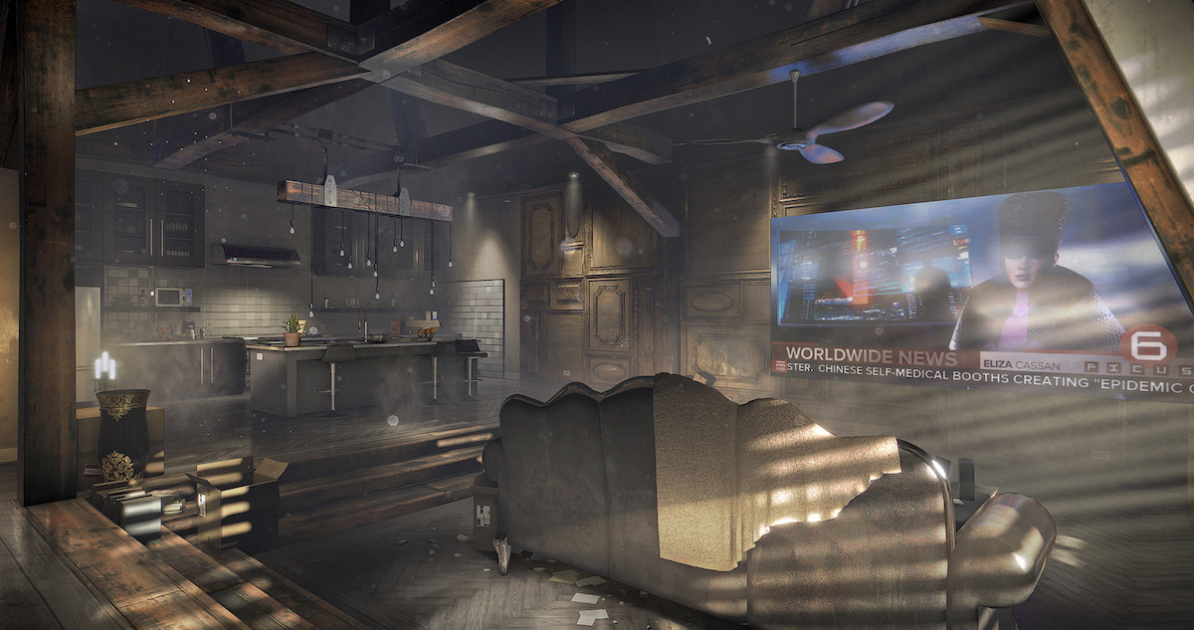

That is a valid point but Deus Ex: Mankind Divided is one of the games where not using the highest or second to the highest setting for Texture Quality has a noticeable reduction in image quality. Some may argue that 8GB is overkill and you can just use a lower setting for Texture Quality. The Texture Quality is the main image quality setting that greatly affects VRAM usage. With this game, we recommend to aim for 8GB of VRAM if the graphics card you will be buying has a 4GB variant and an 8GB variant. The game looks much more beautiful when you are playing.īefore, we would recommend to get a graphics card with at least 4GB of VRAM.

The screenshots below are just for comparing the image quality differences among the tweaked settings shown in the table above.
#3440X1440P DEUS EX MANKIND DIVIDED IMAGE 1080P#
For those with less powerful GPU’s, you can still play the game at 1080p but there would be a noticeable reduction in image quality because you need to further reduce some of the image quality settings. The game still looks impressive even when using the tweaked settings for Radeon RX 470 4GB and GeForce GTX 970 4GB. Perhaps we are seeing that kind of scenario again in 2016. The top-end GPU at that time cannot reach 30 FPS at 1920 x 1200 when every image quality setting is set to maximum. But we think that many gamers have just forgotten or are not aware of Crysis which was released in November 2007. Some would say Deus Ex: Mankind Divided is just poorly optimized because the GTX 1080 is a gaming GPU for 1440p based on its performance in other games. This game is really demanding that the GeForce GTX 1080 is only good for 1080p if you use maximum settings. The table below shows the minimum hardware we recommend. We know some gamers would just want to know what they need to be able to play this game so we area going to lead with that information. Version 1.4 build 545.4 of the game was used for this review. The test results are the average of 3 benchmark runs.
#3440X1440P DEUS EX MANKIND DIVIDED IMAGE PC#
The PC we used for this article is shown below:įrame rates and frame times of a 60-second game play were recorded using FRAPS v3.5.99. NVIDIA for lending us the GTX 1080 Founder’s Edition How We Tested AMD for lending us the MSI RX 460 2GB OC and MSI RX 470 4GB Gaming Xģ. ASUS Philippines for lending us the ASUS Strix GTX 950 2GB OCĢ. Video Output – HDMI, 34-pin LCD connector.Storage – Socket for 8, 16, 32 or 64GB pluggable eMMC modules, micro SD slot up to 32GB, optional NAND flash.SoC – Actions Semi S500 quad core Cortex A9r4 processor with PowerVR SGX544 GPU 500 MHz.Allo is a company based in Bangalore, India specializing in VoIP hardware solutions, but they’ve recently developed a single board board powered by Actions Semi S500 quad core processor that supports various Raspberry Pi HATs and can be used for multimedia, IoT, and Telecom application such as Asterix or Freeswitch PBX.1.

Camera – 24-pin camera interface (Up to 5MP).Misc – IR receiver, 5 buttons: power, reset, vol +/- and home.Power Supply – 5V/1.5A via micro USB port.The company has also developed several HAT compliant add-ons board for the board that can also be used on the latest Raspberry Pi models: The board is said to support 5 operating systems namely Ubuntu 14, Arch Linux ARM, OpenELEC, Fedora and Android, and various applications have been ported to the board including Rune Audio, Kodi, Squeezebox, openCV, node.js and more. TI DAC – Audio board with PCM5122 DAC, TPA3116D2 amplifier, stereo RCA connectors, and a 3.5mm stereo jack.Amplifier board – Features hardware to connect left and right speakers, and signals to control volume.PMU DAC & SPDIF connector – Optical S/PDIF, coaxial S/PDIF, TPA6133A2 stereo headphone amplifier that output to RCA, 3.5mm jack, or 2x50W speakers (hardware options).Analog Board (Pictures above) – With for RJ11 ports configurable as FXO or FXS.



 0 kommentar(er)
0 kommentar(er)
